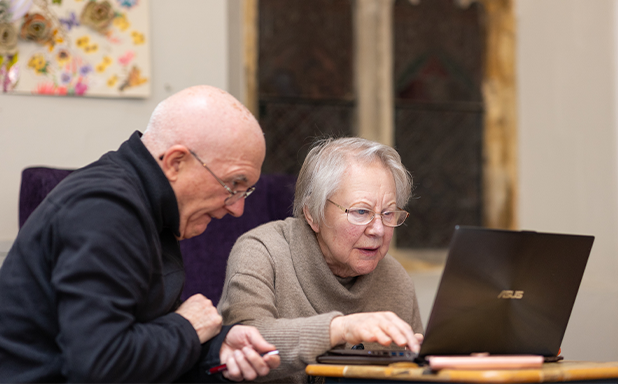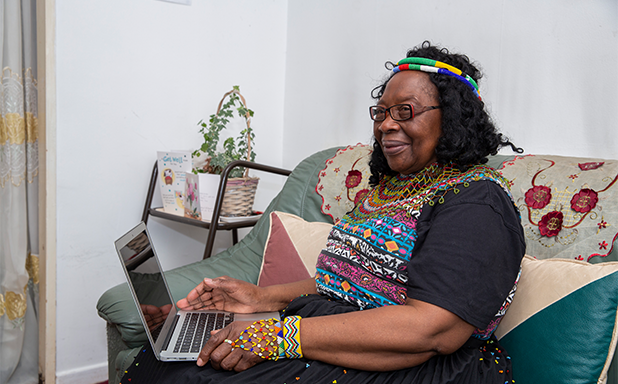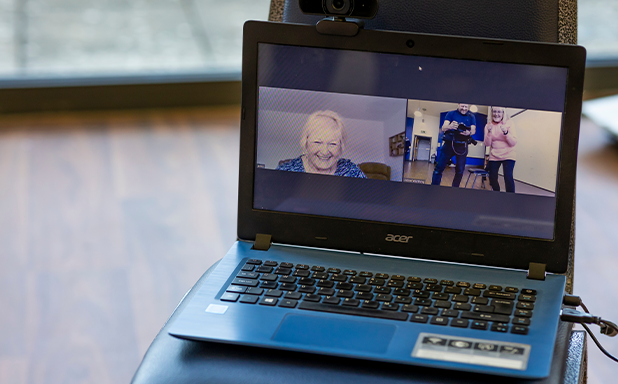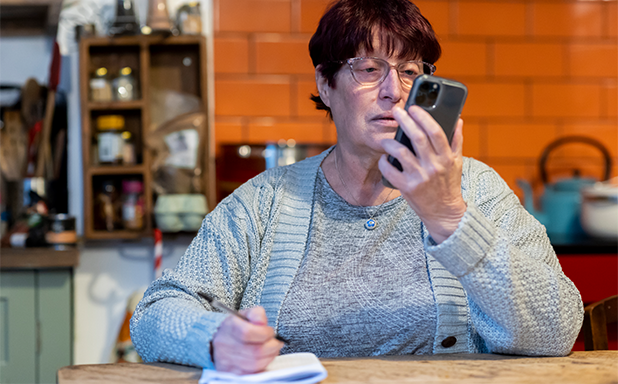During the pandemic, many older people turned to digital devices to stay connected with friends and family, but are they still using digital technologies in their everyday lives? New research investigates.
Throughout the festive season, generations will gather together to celebrate and share in the joys of Christmas, but it wasn’t too long ago that many of us were forced to endure a virtual Christmas away from friends and family.
The COVID-19 pandemic affected all of our lives, but it seriously impacted the everyday lives of older people. Older people were commonly viewed as being ‘high-risk’, and there was a heightened emphasis on their possible vulnerabilities.
During this time, many older people were forced to isolate and shield from the outside world, which affected their regular social engagements and interactions. Many of them were unable to see their loved ones and had to adapt to a temporary ‘new normal’.
New research from Brunel University London explored the use of digital devices by older people during and since the COVID-19 pandemic, to identify barriers and facilitators to using digital technologies in everyday life.

The study, published in the journal Frontiers in Psychology, involved three moderated online focus groups with older people from West London. The researchers facilitated group discussions around specific issues and enabled interaction among the participants.
Participants were asked about the digital technologies that they had used since the pandemic, what they enjoyed about them, and what worries or concerns they have about digital technologies.
Dr Wendy Martin, an expert in ageing from Brunel, said: “Each focus group was audio recorded, anonymised and transcribed for thematic analysis. This allowed us to establish a set of themes to best describe the data”
“Three distinct themes were generated by the focus groups. The first was incorporating the digital into everyday life; the second was social and digital connectivity; and the final theme was challenges and limitations of digital technologies in everyday life.”
Incorporating tech into everyday life during the pandemic
The study found that the disruptive changes during the pandemic resulted in the participants increasing their use of digital technologies in everyday life.
For some, there was initially some reluctance until they realised that the pandemic was long-term.
The purpose of changing the way they used digital technology was to predominantly maintain social connections and social activities, which included connections with family and friends.

Participants used a range of devices during the pandemic, including smartphones, laptops, computers and iPads.
There was also an increased use of social media, WhatsApp, Teams and Zoom to enhance sharing and communication with friends and loved ones.
The social side of tech
Participants talked about the value of being together and passing shared time online while being in different spaces. At times, this helped to ease the sense of isolation during the pandemic.
“WhatsApp was notably used more for all types of communication, but also for fun, humour and sharing jokes,” said Dr Martin.
“The participants planned time into their daily routines to be connected online, and they recalled sharing special occasions with others online, such as Christmas.”
Digital technology also enabled participants to maintain contact with social groups and activities associated with the church, the arts, music, sport and other hobbies. It also gave them access to online events and festivals and allowed them to participate in paid work and volunteering.

The participants highlighted some of the perceived benefits of continuing with some digital connections post-pandemic. These included being more efficient with time, not needing to travel and not having to go out in wet weather.
Many participants were keen for social activities to become more hybrid, allowing people to choose to be online or in person. This was considered a more inclusive approach for older people.
Digital technology has also become a memory aid for participants, helping them to remember information. This included using a digital diary as a calendar and setting reminders about events and activities.
The challenges and limitations
The shift in digital use during the pandemic didn’t come without challenges for the participants. Technological difficulties were highlighted, as was a lack of knowledge about digital and online practices.
Participants expressed concerns over privacy and data risks and were worried about their vulnerability to possible scams.
Adapting to online catch-ups and socials did take some time for the participants, and the momentum online was described as different from face-to-face.
Participants also had to adapt to using the technologies as they navigated the norms of interacting online.

While there were many positive experiences around the increased use of digital technologies in everyday life, the key concern that participants highlighted was the move to remote forms of communication within health and social care during and since the pandemic.
“For some participants, a move from face-to-face appointments to online calls and emails was seen as effective and efficient, but for many participants, there was a sense of frustration at not being able to connect with health and social care staff in person,” said Dr Martin.
“In particular, there was a sense that something might be missed by not seeing a health professional face-to-face.”
Participants also expressed sadness for older people who might be at risk of becoming socially excluded due to limited connections with the digital world.
There were concerns for people who didn’t have the required technologies and for those who felt uncomfortable or unsure about how to use them. Concerns for people with memory issues and dementia were also discussed.
“The pandemic galvanised many older people into using digital technology, and the richness of our research provides important insights into the meaning and experiences of the increasing use of digital devices during and since the pandemic,” said Dr Martin.
“With technology being integral to many aspects of life, including healthcare, it is therefore essential that older people are able to engage with it”.
“Technology enables older people to stay connected and socialise, and our research shows that digital devices have enriched the lives of older people since the pandemic.”
‘Ageing, the Digital and Everyday Life during and since the Covid-19 pandemic’, by Wendy Martin, Geoff Collett, Chris Bell and Amy Prescott, is published in Frontiers in Psychology.
Images: (c) Centre for Ageing Better
Reported by:
Nadine Palmer,
Media Relations
+44 (0)1895 267090
nadine.palmer@brunel.ac.uk